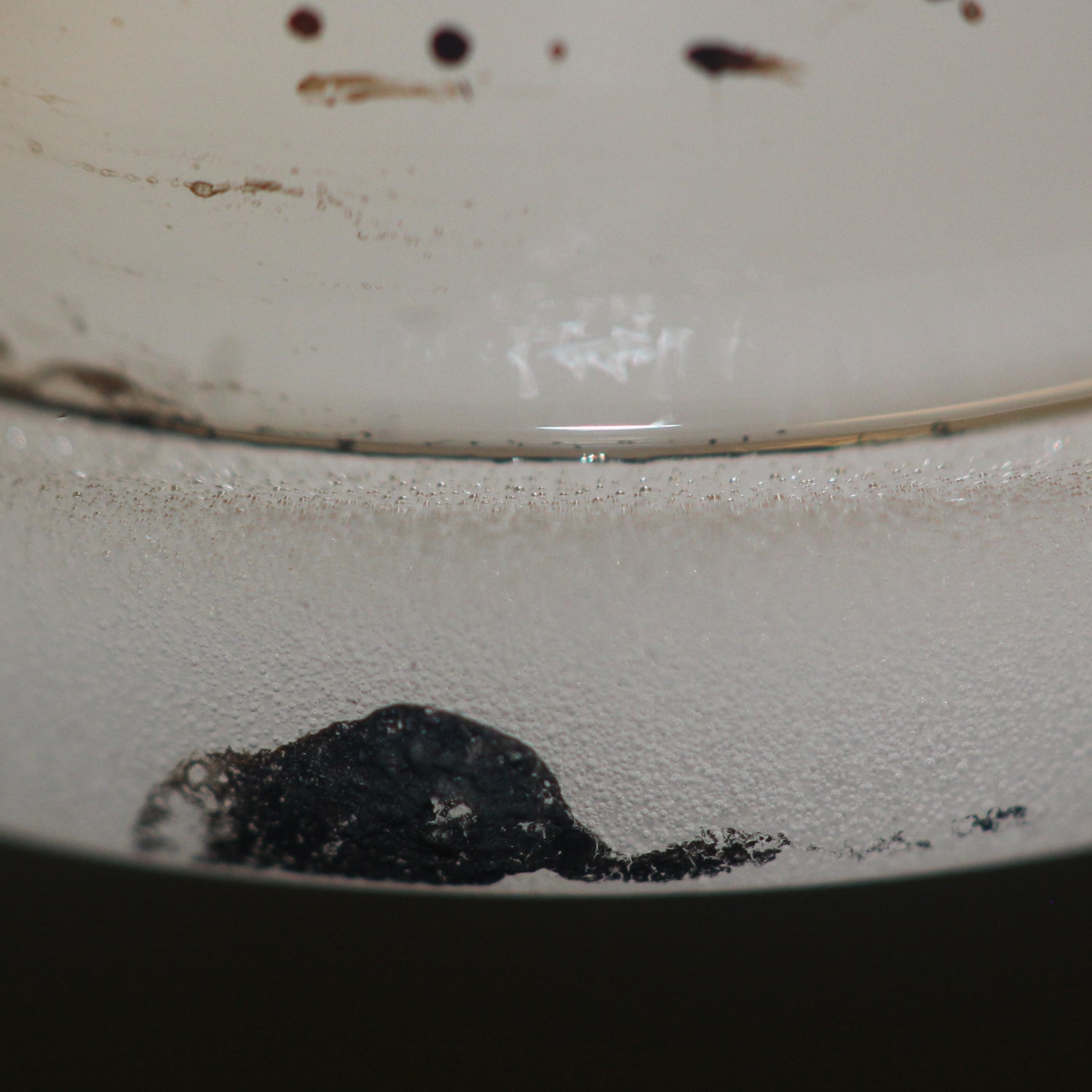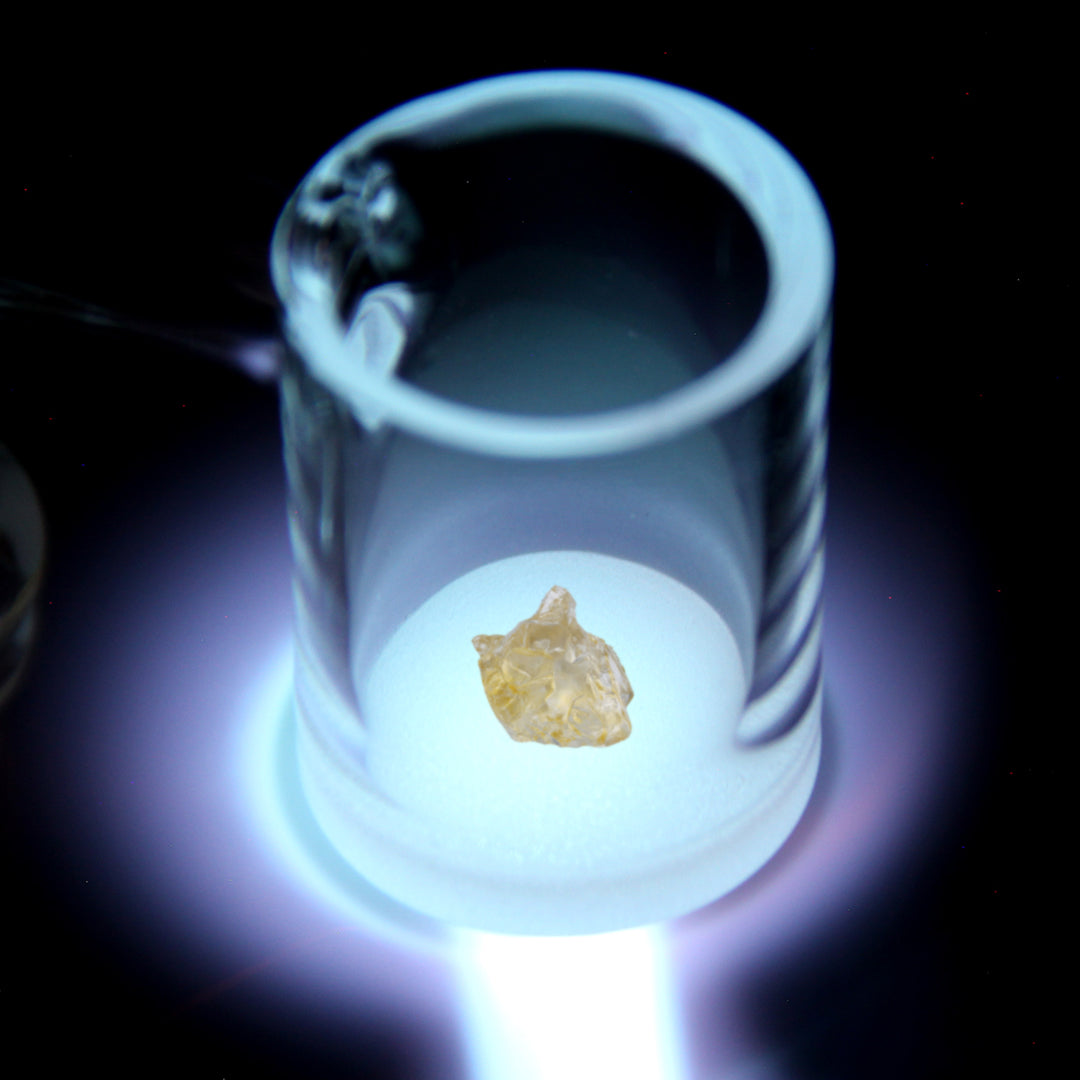
Quartz Cleaning Solutions
The following is my own conjecture both as the owner of Highly Educated and a connoisseur of the cleaning products. I do not own any cleaning solution company and do not advocate for one over another. The purpose of this article is to help educate consumers how to avoid experiencing contamination stains that can develop from improper use.
Cleaning Solutions Can Work Great:
When used properly. When used improperly they can cause more harm than good. Stay conscious of what is in them and more importantly, what is being left behind on the surface of your material before reheating it. By submerging the quartz into a solution, instead of boiling the solution on the quartz, you can minimize the probability of any elements baking on to the surface. This allows for an easy rinse off. If you must boil the cleaning solution in the bucket, it is critical you rinse the inside and outside thoroughly with distilled water and dry the piece before firing. Failure to do so can cause contaminant stains to develop that can eventually lead to surface devitrification.
Mysterious black spots on the outside:
Have you ever seen a Gavel with what appear to be burn marks, black stains, or "chazz" appearing on the outside bottom of the bucket? Nine times out of ten this comes from the improper use of a cleaning solution.
How are these marks made?
These marks are usually created when a cleaning solution is squirted into a hot or mildly warm bucket after use. Cleaning solutions are usually very reactive to the nucleated surface of the opaque depending on the solutions viscosity and boiling temperature this can cause certain solutions to boil up and over the bucket walls. This becomes problematic when the boiling solution, mixed with residual oil contaminants, rises over the bucket walls and drips down to the floor where it stops and hides.

The residual heat from the bucket causes it to evaporate on the outside bottom of the opaque leaving behind a thin, almost invisible, film. If exposed to an open flame this film burns and bakes onto the surface leaving the user with the contaminant spots in the affected areas.
Therefore the residue from this solution must be removed before firing or else it will bake onto the porous surface of the opaque, leading to potential devitrification.

Can anything be done about the spots?
Yes. If the spots have devitrified and a torch can not remove them there is still hope. We are capable of removing contamination spots for our customers. Feel free to contact us for more information regarding this service.
What about ISO & Water?
Distilled water is great, but it can still absorb dust and dirt particles and should still be removed/dried before firing. Squirting isopropyl alcohol into a warm bucket for in between maintenance is generally less cause for concern than other cleaning solutions and I make an exception for it in this regard. However, alcohol poses its own flammable hazards, and alcohol vapors can travel down the rig of the neck condensing back into alcohol and enter the rig. Never squirt alcohol into a super heated bucket as it can spontaneously ignite, and never expose the alcohol or alcohol vapor to an open flame. If you do experience an ignition of the alcohol or fumes inside the bucket, don't panic. Allow the flame to burn safely inside the bucket until it has ran out of fuel. If alcohol has ignited outside the bucket, you can panic.
Closing remarks:
The number one cause of devit is burning contaminants on the surface. As long as your inside and outside surface of the quartz is clean before firing, you will most likely not experience any devit with a butane or propane torch.


